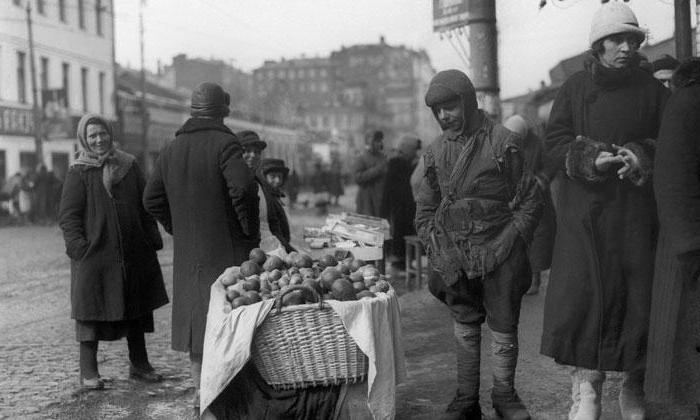The grain procurement crisis occurred during the New Economic Policy (NEP) in the Soviet Union in 1927. In general, in the 1920s, two more economic crises occurred in the country , which testified to serious problems not only in the agricultural, but also in the industrial sector of the economy. Unfortunately, to overcome them, the authorities did not resort to market methods, but to the administrative-command system, solving problems in a forced manner, which further worsened the economic situation of peasants and workers.
Background
The causes of the grain procurement crisis should be sought in the economic policy pursued by the Bolshevik Party in the 1920s. Despite the program of economic liberalization proposed at the time by V. Lenin, the new leadership of the country, headed by I. Stalin, preferred to act by administrative methods, giving preference to the development of industrial enterprises rather than the agricultural sector.
The fact is that already in the mid-1920s, the country began to actively purchase and produce industrial products at the expense of the village. Export of grain became the main task of the government, since the funds received from its sale were necessary for industrialization. The grain procurement crisis was caused by unequal prices for industrial and rural products. The state purchased bread from peasants at a reduced price, while artificially high prices of manufactured goods.
Such policies have led peasants to cut grain sales. A poor harvest in some regions of the country has led to a deterioration of the situation in the country, accelerating the folding of the NEP.
Procurement problem
Grain prices offered by the state to the peasants were clearly underestimated in comparison with market prices, which contradicted the principles of the NEP, which assumed a free economic exchange between town and country. However, due to the policy of the state, which cared primarily for the development of industry, the peasants reduced the sale of grain, even reduced the sown area, which gave the party leadership reason to blame the village. Meanwhile, the lowered grain prices did not stimulate the peasants to develop agricultural production.
So, in the winter of 1927-1928, they delivered 300 million pounds of grain to the state, and this was more than one million less than last year. It should be noted that the crop at that time came out very good. The peasants suffered not only because of low prices, but also from the shortage of industrial goods that they needed so much for agricultural production. The situation was aggravated by the fact that riots often occurred at the grain delivery points to the state, in addition, rumors were actively circulating in the village about a possible start of the war, which increased the indifference of rural producers to their work.
Nature of the problem
The grain procurement crisis has led to a reduction in the state’s income necessary for the purchase of industrial goods abroad.
Also, the disruption of grain purchases in the village led to the fact that the industrial development plan was in jeopardy. Then the party headed for the compulsory seizure of bread from those peasants who refused to sell grain to the state at special, purchase prices that were lower than market prices.
Party measures
The grain procurement crisis provoked a response in the country's leadership, which decided to collect surplus products, for which special inspections were created in different regions of the country (Stalin led the group that went to Siberia). In addition, large-scale field cleanings have begun. In the village councils and party cells, those who, according to senior management, could not cope with the supply of bread to the state, quit. Special units of the poor were also formed, which seized bread from the kulaks, for which they received 25 percent of the grain as a reward.
results
The grain procurement crisis of 1927 led to the final curtailment of the NEP. The authorities abandoned the plan for creating cooperatives, which Lenin had insisted on at one time, and decided to radically transform the agricultural sector, creating new forms of interaction between the village and the state in the form of collective farms and machine-transport stations (MTS).

Problems with the supply of bread to the cities led to the fact that the party introduced food and industrial cards, canceled after the end of the Civil War. Since the industrial sector functioned normally due to the active support of the state, the kulaks, wealthy peasants, were accused of all troubles. Stalin put forward the thesis of the aggravation of the class struggle, which gave reason to curtail the NEP and move to collectivization in the countryside and industrialization in the cities. As a result, the peasants were united into large farms, the products of which were supplied to the state, which made it possible to create the largest industrial base in the state in a fairly short time.